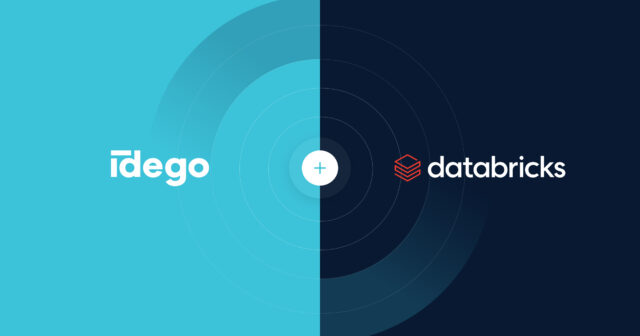
More and more companies (small, medium-sized and large) decide to move their systems to the cloud. In many cases, such a solution enables an organization to reduce operating costs, improve the internal and external collaboration and gain almost unlimited scalability. Are you thinking of moving your business to the cloud? Learn about the challenges you will probably need to face and find out what you should know when choosing cloud computing architecture.
All IT projects have one thing in common – before you start the whole process of development or take any actual steps, you need to consider the requirements for your IT business solutions and services. Choosing the right cloud computing architecture is not an easy task, but with the support of the right consultants, architects and developers it should not take long, before you start to take advantage of your new cloud architecture. What do you need to know?
Why should you consider moving to the cloud?
Do you wonder why so many organizations move to the cloud? Those are not only IT professionals who decide to choose the cloud. Companies from all kinds of industries revolutionized their businesses this way. Here are the main benefits of moving business systems to the cloud environment:
- increased efficiency – cloud solutions for businesses are famous for their scalability. With the cloud, you do not need to purchase new equipment, build and maintain large data centers. If you need extra resources (memory), you simply use it and develop. Cloud enables you to significantly reduce the spending and time needed to kick off your new projects.
- financial flexibility – cloud solutions are well-suited for any size of the company. You only have to define your needs and choose the best offer. If you need more memory, you pay a bit more, if you no longer require so much space for your projects, you simply reduce it and pay less. Public cloud, private cloud, hybrid solution – there are plenty of choices.
- better mobility and collaboration – cloud enables your employees to work any time and anywhere. With the cloud, many people can work on the same document at the same time. Users immediately receive updates, are able to communicate easier and share files – all these features may speed up any project.
- disaster recovery – cloud service providers make sure that their client’s data are well-protected from both hackers and natural disasters. You can always count on a backup in case you lose your data.
Now, when you know what the most important benefits of cloud solutions for business are, let us discuss the things you need to consider while choosing your new cloud computing architecture.
Choosing cloud computing architecture – challenges
Acknowledging the benefits of the cloud is one thing, but actually adopting it is quite a different matter. Many companies move to the cloud without having a robust cloud adoption strategy. It can affect the speed of the whole process or the security of the cloud architecture due to imprecise configuration. If you want to build cloud architecture for your organization, think of potential issues and make sure that you are prepared.
Another challenge is building a private cloud. Not all companies need it, but some decide to implement such a solution. In order to do it efficiently, you should automate as many manual tasks as you can and leverage systems for the orchestration of tasks to make sure that all of them are executed in the right order.
What are baseline architecture types?
An organization can base its cloud architecture development on one of the various architectures types:
Single server
Such architecture is not really popular. There are multiple security risks considering here. In this case, there is one server used – either virtual or physical – which contains a web server, an application and a database. Single server architecture is usually used for development projects because it enables developers to build functionalities in a short time and there is no need to deal with connectivity issues between many servers in several locations (as there is only one server).
Single-site
Single-site architecture still operates based on one server – all the layers are split into computer instances in order to create a three-tier architecture. There are two types of single-site architecture:
- Non-redundant three-tier architectures – this solution can be leveraged to reduce organization costs and other resources, but it also comes with a greater risk. If a single failure occurs in any component, all the traffic flow in the environment can be disturbed. Consider it, if you are creating an environment for development or testing.
- Redundant three-tier architectures – in this type of architecture there is another set of the same components added, which increases complexity of the architecture, but it is needed if infrastructure is designed for recovery protection. The traffic flow through the layers and components for each layer should be considered carefully.
Multi-cloud architecture is recommended when it comes to developing a highly scalable and reliable application. There are multiple types of complex cloud architecture that can be applied depending on your business needs.
Cloud Architecture Components
Cloud computing architecture creates an environment where the companies can develop applications efficiently. Cloud architecture is divided into two parts – frontend and backend. The frontend is also called a client-side (client infrastructure). It is used by customers, as it provides users with a user interface that enables them to interact with a cloud-based solution.
Two parts of the cloud architecture connect via an Internet network. The backend consists of many data storage systems and servers, an application chosen by an end-user (software or a platform that suits users’ needs), scalable storage space for storing and maintaining different kinds of data, security solutions, etc. Service providers are working with it to manage resources that are required for providing cloud computing services to the companies.
The type of service is also a cloud architecture component. Cloud computing offers:
- Software as a Service (SaaS) – a cloud computing service provider delivers on-demand software applications on a subscription basis and deals with infrastructure management. End-users can access the applications on multiple devices from anywhere.
- Platform as a Service (PaaS) – this service provides a framework along with respective tools for development, testing, and managing software applications.
- Infrastructure as a Service (Iaas) – the customer can use their own platforms and applications within an infrastructure provided by a service vendor. An organization benefits from access such as storage space, networking capabilities and servers.
- Function as a Service (Faas) – it can be called an extension of the PaaS solution as it adds an extra layer of abstraction to it. FaaS applications do not consume any IaaS resources before particular blocks of code are triggered by a certain event. It reduces the costs of using cloud services.
How to create a good cloud architecture?
There is no single recipe for building an efficient and secure cloud architecture. A good strategy is crucial though. Think carefully about your company’s needs and requirements. We will be happy to offer you our advice and help during the whole procedure.








 Andrzej Kopera • Sep 05
Andrzej Kopera • Sep 05

